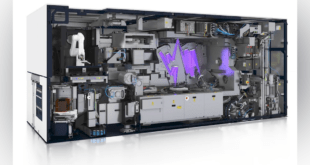In the rapidly evolving field of drone technology, multispectral targeting sensor systems have emerged as a game-changer, significantly enhancing the capabilities of unmanned aerial vehicles (UAVs). These advanced systems enable drones to capture and analyze a broad range of data across multiple wavelengths of light, providing a more detailed and comprehensive understanding of the environment. As the demand for precision and versatility in drone operations continues to grow, multispectral targeting sensors are becoming increasingly vital in military, environmental, and commercial applications.
What Are Multispectral Targeting Sensors?
Multispectral targeting sensor systems are sophisticated devices that capture data across several spectral bands, typically including visible light, infrared (IR), and ultraviolet (UV) wavelengths. By processing and analyzing this data, these sensors can generate high-resolution images that reveal details not visible to the human eye or standard cameras. This capability allows for enhanced target detection, identification, and tracking, making them invaluable in various operational scenarios.
Key Applications in Modern Warfare
One of the primary applications of multispectral targeting sensors is in military operations, where they are used to improve the accuracy and effectiveness of drone-based surveillance and targeting. By capturing data across multiple spectral bands, these sensors can identify camouflaged targets, detect heat signatures, and even track movements in low-light or obscured environments. This enhanced situational awareness is crucial for mission success, allowing for precise engagement of targets while minimizing collateral damage.
Moreover, multispectral sensors are integral to advanced electronic warfare strategies. They can detect and analyze the electromagnetic spectrum emitted by enemy radar and communication systems, enabling drones to conduct jamming or spoofing operations effectively. This capability not only disrupts enemy operations but also provides critical intelligence that can be used to counteract threats in real-time.
Environmental and Commercial Uses
Beyond military applications, multispectral targeting sensors are also making a significant impact in environmental monitoring and commercial industries. In agriculture, for instance, drones equipped with these sensors can monitor crop health by detecting specific wavelengths of light reflected by plants. This information allows farmers to optimize irrigation, apply fertilizers more efficiently, and ultimately increase crop yields.
In environmental science, multispectral sensors are used to monitor ecosystems, track wildlife, and assess the impact of natural disasters. By analyzing data from different spectral bands, scientists can gain insights into the health of forests, the condition of coral reefs, and the effects of climate change on various ecosystems. These sensors are also valuable in urban planning, where they can be used to assess infrastructure, monitor pollution levels, and manage natural resources more effectively.
Raytheon’s Multi-Spectral Targeting System (MTS)
Raytheon’s Multi-Spectral Targeting System (MTS) combines electro-optical/ infrared (EO/IR), laser designation, and laser illumination capabilities in a single sensor package. Combat proven, with nearly four million operational flight hours, the MTS product family of sensors, including MTS-A, MTS-B, MTS-C, MTS-D (AN/DAS-4) provide detailed intelligence data from the visual and infrared spectrum in support of U.S. military, civilian and allied missions around the world.
Using cutting-edge digital architecture, MTS brings long-range surveillance, target acquisition, tracking, range finding and laser designation for the Griffin® missile and Paveway® laser-guided bomb, as well as all tri-service and NATO laser-guided munitions. MTS sensors feature multiple fields of view, electronic zoom, multimode video tracking and are designed to incorporate future growth options and performance enhancements.
To date, Raytheon has delivered more than 3,000 MTS sensors to U.S. and international armed forces and successfully integrated 44 variants of the system on more than 20 rotary-wing, Unmanned Aerial System, and fixed-wing platforms – including the MH-60 Blackhawk, the C-130 Hercules, the MQ-9C Reaper, the MQ-1 Predator, and the MQ-1C Gray Eagle.
U.S. Navy Upgrades Attack Drone Capabilities with Raytheon’s Next-Gen Sensor System
The U.S. Navy is significantly enhancing the capabilities of its MQ-9 Marine Air-Ground Task Force (MAGTF) attack drones and other unmanned reconnaissance aircraft by integrating a cutting-edge multispectral targeting sensor system. Raytheon Technologies Corp. (RTX) has secured a $47.9 million contract to supply nine AN/DAS-4 systems, a move that promises to revolutionize the Navy’s surveillance and targeting operations.
The AN/DAS-4: A Multispectral Powerhouse
The AN/DAS-4 system represents a leap forward in electro-optical and infrared (EO/IR) technology, offering a suite of advanced features:
- High-Definition Vision: Equipped with four high-definition cameras spanning five spectral bands, the AN/DAS-4 delivers crystal-clear imagery across a broad spectrum of lighting conditions, ensuring superior visual clarity and detail.
- Laser Targeting Precision: A three-color diode pump laser designator and rangefinder provide pinpoint accuracy in target location and designation, crucial for mission success.
- Advanced Tracking: The system’s laser spot search and track capability, combined with a three-mode target tracker, enables precise and reliable target identification and engagement.
- Built-in Growth Potential: Designed with the future in mind, the AN/DAS-4 is adaptable to emerging threats, allowing for seamless upgrades and integration of new technologies.
These sophisticated features equip mission commanders with unparalleled high-definition data from the air, resulting in more accurate target identification and engagement than ever before.
The true power of the AN/DAS-4 lies in its multispectral capabilities, which allow it to capture information beyond the visible spectrum. By analyzing images and video across various light wavelengths, including infrared and ultraviolet, the system offers a more comprehensive view of the environment. This multispectral advantage translates into:
- Improved Target Detection: The ability to identify targets that are camouflaged or obscured in low-light conditions, making it invaluable for diverse operational scenarios.
- Enhanced Threat Identification: Greater accuracy in distinguishing between different types of objects, improving threat assessment and response.
Beyond the MQ-9: A Versatile Solution
The AN/DAS-4’s versatility extends beyond the MQ-9 drone. It is also being integrated into the U.S. Navy’s MQ-4C Triton, a long-range maritime patrol UAV, highlighting the system’s adaptability across multiple platforms.
Challenges and Future Developments
While the benefits of multispectral targeting sensors are clear, there are still challenges to be addressed. One of the main challenges is the integration of these complex systems into small, lightweight drones without compromising their performance. Advances in miniaturization and power efficiency are crucial to overcoming this hurdle and expanding the use of multispectral sensors across a broader range of UAV platforms.
Another challenge is the development of algorithms and software capable of processing the vast amounts of data generated by these sensors in real-time. As the resolution and complexity of multispectral images increase, so does the need for advanced data processing techniques that can quickly analyze and interpret this information.
Looking ahead, the future of multispectral targeting sensor systems on drones is promising. Innovations in sensor technology, coupled with advancements in artificial intelligence and machine learning, are expected to drive the development of even more sophisticated and capable systems. These next-generation sensors will provide greater accuracy, faster processing, and more comprehensive data analysis, further enhancing the capabilities of drones in both military and civilian applications.
Conclusion
Multispectral targeting sensor systems represent a significant advancement in drone technology, offering unparalleled capabilities in data collection, analysis, and target identification. As these systems continue to evolve, they will play an increasingly important role in a wide range of applications, from enhancing military operations to supporting environmental conservation efforts. By providing a deeper understanding of the world around us, multispectral targeting sensors are helping to unlock the full potential of drones in the modern era.
 International Defense Security & Technology Your trusted Source for News, Research and Analysis
International Defense Security & Technology Your trusted Source for News, Research and Analysis

